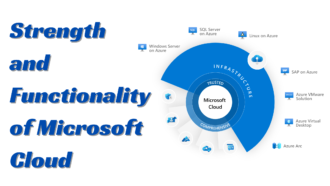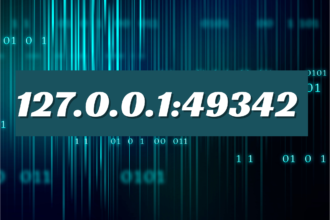Integrating Elixir with Legacy Systems for Sustainable Growth
In today’s rapidly evolving technology landscape, companies face the dual challenge of maintaining sustainable growth while simultaneously innovating. Legacy systems, often the backbone of established businesses, can hinder this growth due to their outdated architecture and inability to scale effectively. That’s where Elixir development companies come to the rescue, opening up a promising path to revitalizing these systems. This article explores how Elixir can seamlessly integrate with legacy systems to achieve sustainable growth, reduce technical debt, and improve system performance.
Integrating Elixir with Legacy Systems for Sustainable Growth
The Challenge of Legacy Systems
Legacy systems are critical for many businesses, containing essential functionalities and data accumulated over the years. However, these systems are often built on outdated technologies, making them slow, inflexible, and expensive. The primary challenge is to modernize these systems without disrupting ongoing business operations. This is where Elixir, a dynamic, functional language designed for building scalable and maintainable applications, comes into play.
Elixir: A Catalyst for Modernization
Elixir, built on the Erlang VM (BEAM), is known for its fault tolerance, scalability, and concurrency. Its functional programming paradigm encourages clean and maintainable code, making it an excellent choice for updating and improving legacy systems. By integrating Elixir, businesses can significantly reduce technical debt while adding the capability to handle more users and transactions without compromising performance.
Scalability and Performance
One of Elixir’s key benefits is its ability to handle a large number of simultaneous connections and processes efficiently. This is crucial for businesses looking to scale their operations without overhauling their entire infrastructure. Elixir’s lightweight processes and robust concurrency model enable legacy systems to manage increased load efficiently, improving system performance and user experience.
Reducing Technical Debt
Technical debt accumulates when outdated or inefficient code makes future changes and maintenance difficult and costly. Elixir’s emphasis on functional programming helps reduce technical debt by promoting immutable data structures and explicit state management. This approach minimizes side effects and bugs, making the system more predictable and easier to maintain. Furthermore, Elixir’s modern syntax and tooling can help streamline the development process, making it easier for new developers to understand and contribute to the codebase.
Seamless Integration
Elixir’s interoperability with Erlang and other languages facilitates integration with existing legacy systems. Through Erlang’s ports and NIFs (Native Implemented Functions), Elixir can interact with Java, C#, and other common languages used in legacy systems. This allows businesses to gradually introduce Elixir into their systems, replacing or enhancing parts of the legacy codebase without a complete rewrite. Additionally, Elixir’s powerful metaprogramming capabilities enable developers to create domain-specific languages that mimic legacy systems’ behaviour, easing the transition.
Integrating Elixir with legacy systems presents a viable path for businesses seeking sustainable growth without compromising their current operations. By leveraging Elixir’s scalability, fault tolerance, and modern programming paradigms, companies can breathe new life into outdated systems, reduce technical debt, and prepare for future challenges. The journey towards modernization requires careful planning and execution, but with Elixir, businesses have a powerful tool to make this transition smoother and more effective.
Benefits for Sustainable Growth
Integrating Elixir with legacy systems offers several benefits that contribute to sustainable growth:
- Improved Scalability: Elixir’s concurrency model allows applications to efficiently utilize hardware resources, enabling horizontal scaling to accommodate growing workloads without compromising performance.
- Enhanced Reliability: Leveraging Erlang’s battle-tested concurrency primitives, Elixir applications exhibit inherent fault tolerance, ensuring system resilience in the face of failures.
- Accelerated Development: Elixir’s elegant syntax and productive tooling streamline development workflows, reducing time-to-market for new features and enhancements.
- Legacy Modernization: By encapsulating legacy functionalities within Elixir microservices, organizations can gradually modernize their systems while preserving existing investments and mitigating risks.
- Future-Proofing: Elixir’s focus on concurrency and distributed computing aligns with the demands of modern applications, future-proofing infrastructure investments and enabling long-term scalability.
Real-World Success Stories
Several companies have successfully leveraged Elixir to modernize their legacy systems and drive sustainable growth:
- Discord: The popular communication platform utilizes Elixir for real-time messaging, enabling seamless scalability to support millions of concurrent users.
- Pinterest: Pinterest adopted Elixir for critical backend services, improving system reliability and developer productivity while reducing infrastructure costs.
- Bleacher Report: Bleacher Report migrated portions of its legacy Ruby on Rails stack to Elixir, achieving significant performance improvements and operational efficiencies.
Conclusion
In an era of digital transformation and innovation, integrating Elixir with legacy systems is a strategic imperative for organizations seeking sustainable growth. By harnessing Elixir’s unique capabilities, companies can modernize their infrastructure, enhance scalability and reliability, and position themselves for success in an increasingly competitive landscape. As legacy systems continue to evolve, Elixir stands as a powerful ally in the journey towards technological innovation and sustainable growth.


















